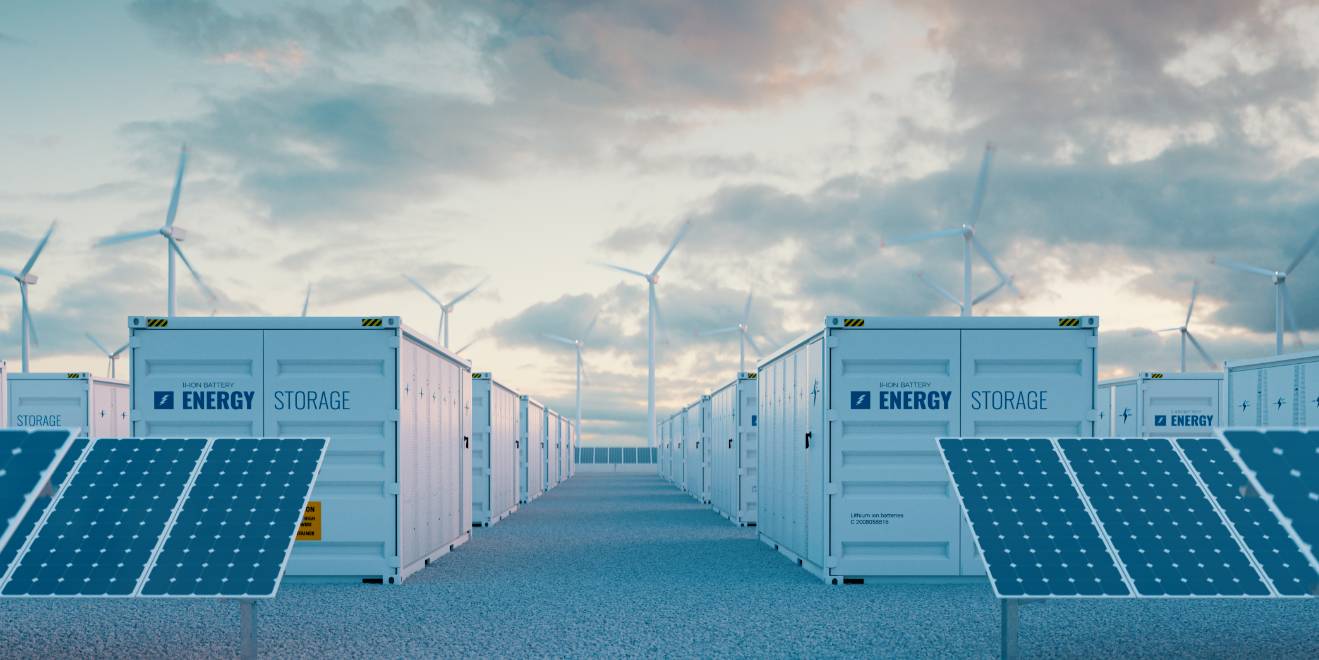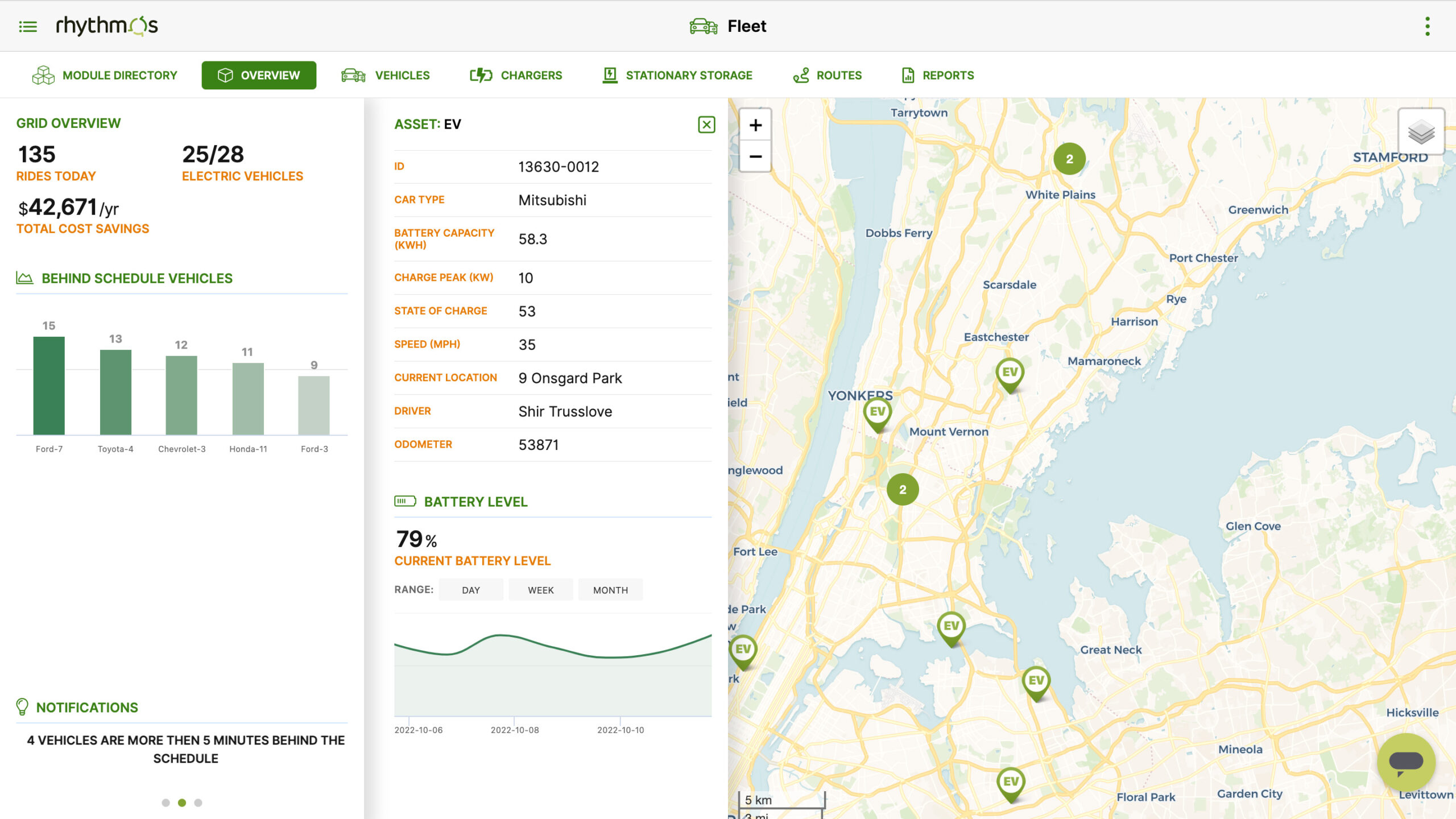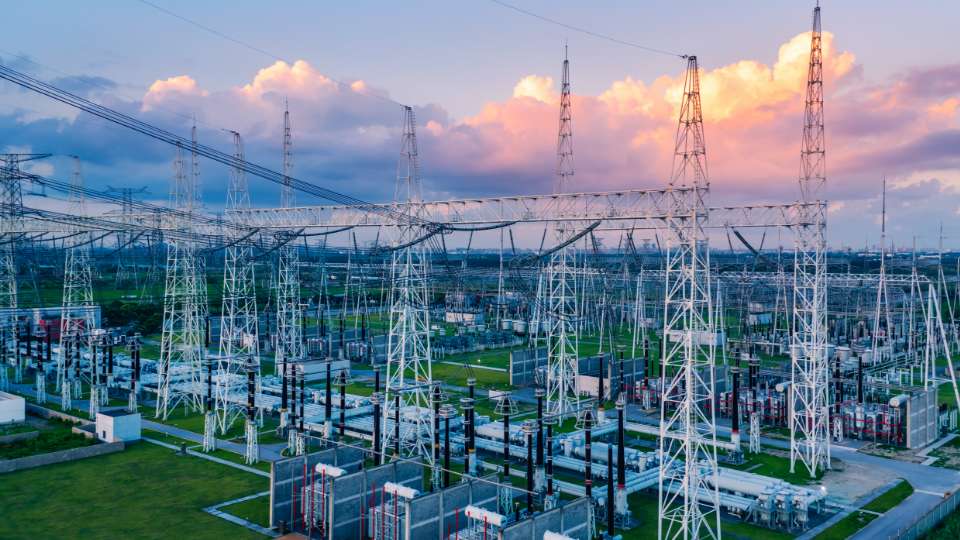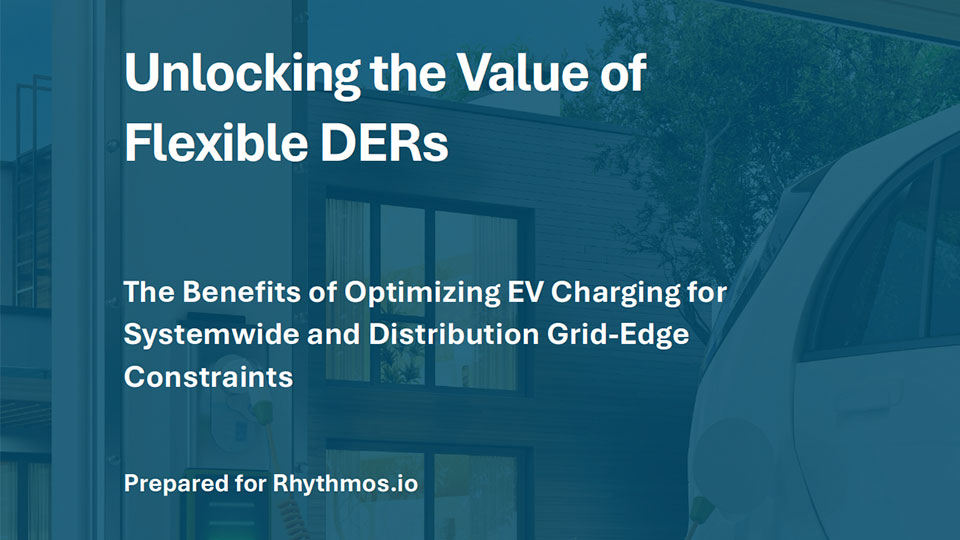Market Application
Rhythmos.io® lets you create a direct link between energy demand, resource procurement, and scheduling.
Which, in turn, lets you minimize overall costs, match renewable generation to EV needs, and facilitate resource aggregation for ancillary services. Sweet.

%
Workforce gap created by energy sector retirement by 2030
Costs increase for grid-related materials
Increase in large transformer demand by 2027
You want predictability, flexibility, and smart energy management. We deliver.
How? By enabling fast, reliable, and cost-efficient EV adoption. By employing staff with a deep understanding of how to use smart energy management to improve capacity, assess vulnerability, and achieve demand flexibility and predictability. And by executing a modern analytics platform to extend existing enterprise applications that is significantly easier and less expensive to integrate than large scale distributed energy resource management systems (DERMS).
Our platform not only helps accelerate EV adoption by making charge management and energy data transparent but by delivering effective planning and management tools that fleet managers can use to control costs.

Market application enables large regional fleets, utilities, community choice aggregators, and retail energy companies to understand varied utility and wholesale market opportunities for managed charging. A single platform combines multiple DERs into a cohesive optimization platform for participation in various utility and wholesale market programs.
Aggregations of vehicles and other DERs across multiple utilities and market programs will be readily assessed for unique and location-specific opportunities that create new value streams for asset owners. National fleets with vehicles spread across multiple utilities will be able to see and optimize those assets for various programs, including grid services.
Rhythmos.io® Modern Analytics Key Benefits:
- Get a holistic understanding of all electrical use.
- Proactively manage all constrained assets
- Defer infrastructure investment
- Optimize energy costs
Capitalize on our experience
Access the latest news, thought leadership, and resources from our team.


